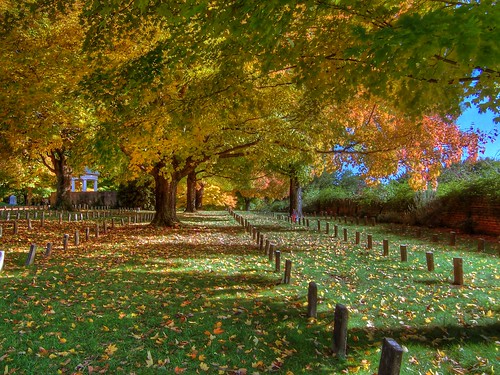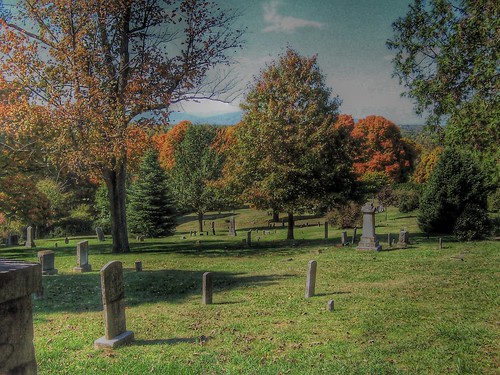An Insightful Heritage “The Old City Cemetery”
 Image by, D L Ennis, The Old City Cemetery in Lynchburg, Virginia; where Civil War soldiers rest
Image by, D L Ennis, The Old City Cemetery in Lynchburg, Virginia; where Civil War soldiers restWhen you first drive in to the Lynchburg, Virginia’s, Old City Cemetery you get the feeling that you have entered just another old graveyard. However, once you park and begin to explore you soon find out that this “old cemetery” is not just any old cemetery. Instead, it is engulfed in history, the history of a sad and painful time in American history; the Civil War era.
The Station House Museum tells the story of the railroad during the era and its importance to the areas economy, life and death of Lynchburg residents and the rails importance to the soldiers of WWI (1917-1919) that passed through Lynchburg on their way to the coast and the war. These soldiers dubbed Lynchburg, “Lunchburg,” because of the hospitality of the Red Cross Canteen service which provided these soldiers with food and drink on their stop in Lynchburg.
The three major railroads that ran through Lynchburg in1864, turned the city in to a regional hub of industry and tobacco and made it one of the wealthiest cities per capita in the United States. During the Civil War, the railroads made Lynchburg the second largest hospital center in Virginia.

Image by, D L Ennis, The Old City Cemetery in Lynchburg, Virginia; where Civil War soldiers rest
The Hearse House tells another part of a devastating and sad time. Across the cobble stone road, resting on a hill is the Pest House Medical Museum, one look inside reveals the crudity of medicine during the time. One can only imagine the screams of pain of a recent amputee and impending infection which followed. You can sense the overwhelming adversity endured by not only the Pest House patients but of Dr. Terrell, Rev. Louis and the missionaries that ministered to the “spiritual and medical needs of patients. During the Smallpox epidemic of 1862-1864, it is said that no one but these brave and hardy souls were the only ones that would go near the place.
Entering the Confederate Cemetery and seeing the rows of markers, over 2200, a good number of which are unmarked, you can’t help but feel how painful it was for the families of these lost soldiers: not only eventually knowing that their loved one had likely died, but where they had died, and where there remains rested as well as never having any real closure.
In the Confederate Cemetery, soldiers from fourteen states rest there, from Virginia to Florida, west to Texas. One-hundred eighty-seven Union soldiers (prisoners) died in Lynchburg Hospitals and were buried in the cemetery until 1866 when they were removed by the Federal Government and ordered to a Federal Cemetery near Norfolk Virginia. The gardens, selected trees and the old brick walls, among other things lend a rejuvenation of life that helps, if only briefly, relieve some of the pain of America’s reflective history.
Technorati Tags: [Lynchburg][Old City Cemetery][Virginia][Civil War][American history][Confederate Cemetery][Florida][Texas][Norfolk][Federal Cemetery][Blue Ridge]












0 Comments:
Post a Comment
<< Home